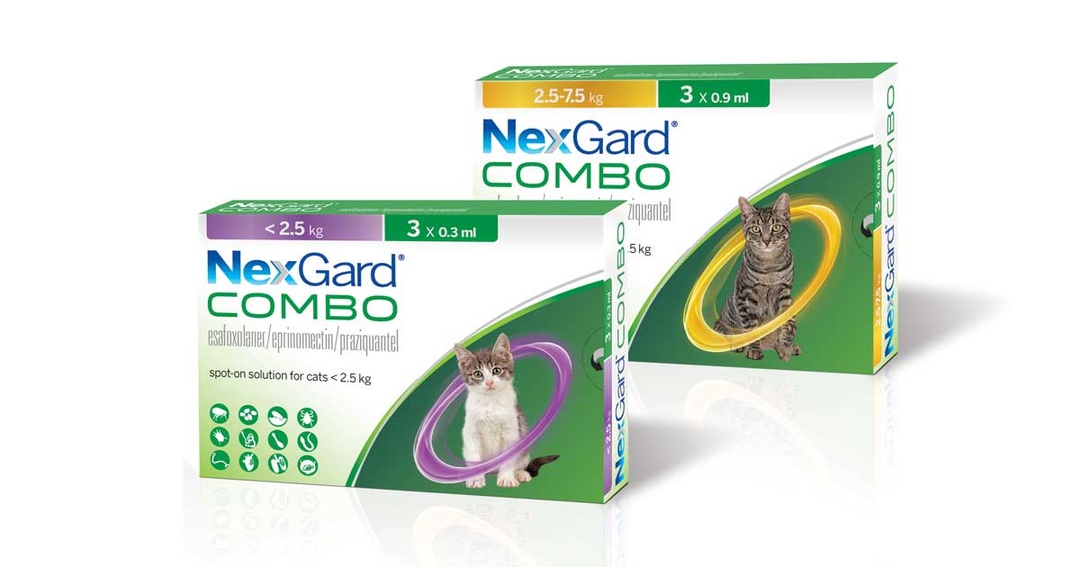6 Aug 2021
NexGard COMBO is the first and only broad-spectrum parasiticide on the market to treat cats for fleas, ticks, ear mites, roundworms and tapeworms.

Boehringer Ingelheim Animal Health has extended its NexGard parasiticide range with the launch of NexGard COMBO spot-on.
The new product is the first and only broad-spectrum parasiticide to treat cats for fleas, ticks, ear mites, roundworms and tapeworms.
NexGard COMBO is a new isoxazoline-based endectocide specifically designed for cats and consists of a trilogy of active ingredients – esafoxolaner, eprinomectin and praziquantel.
The broad-spectrum parasiticide provides one month’s protection against fleas, killing them within 24 hours before they lay eggs, and can be used as part of a flea allergy dermatitis treatment strategy.
Nexgard COMBO also kills Ixodes ricinus, the most common tick on cats, within 48 hours and protection lasts for five weeks.
As well as treating the roundworms Toxocara cati and Toxascaris leonina, hookworms and tapeworms, it provides 97.2% to 99.9% efficacy following one treatment against ear mites1.
Administered as a spot-on with a systemic mode of action, NexGard COMBO can be used in kittens from eight weeks of age and 0.8kg in weight, making it suitable for most kittens at first vaccination.
It is available in two pack sizes: small, for kittens weighing 0.8kg to 2.5kg, and large, for adult cats weighing 2.5kg to 7.5kg. For cats weighing 7.5kg or more, an appropriate combination of applicators should be used.
Jackie Sterratt, senior brand manager at Boehringer Ingelheim, said: “We know only one in two cats is treated for fleas2 and cats are only wormed on average three times per year3 despite all cats being at risk of fleas and most cats requiring monthly roundworming treatment2,3, so there is a big opportunity to increase treatment rates and compliance.”
1. Tielemans E, Prullage J, Tomoko O et al (2021). Efficacy of a novel topical combination of esafoxolaner, eprinomectin and praziquantel against ear mite (Otodectes cynotis) infections in cats, Parasite 28: 26.
2. Cooper A-R, Nixon E, Rose Vineer H et al (2020). Fleas infesting cats and dogs in Great Britain; spatial distribution of infestation risk and its relation to treatment, Medical and Veterinary Entomology 34(4): 452-458.
3. McNamara J, Drake J, Wiseman S et al (2018). Survey of European pet owners quantifying endoparasitic infection risk and implications for deworming recommendation, Parasites and Vectors 11(1): 571.